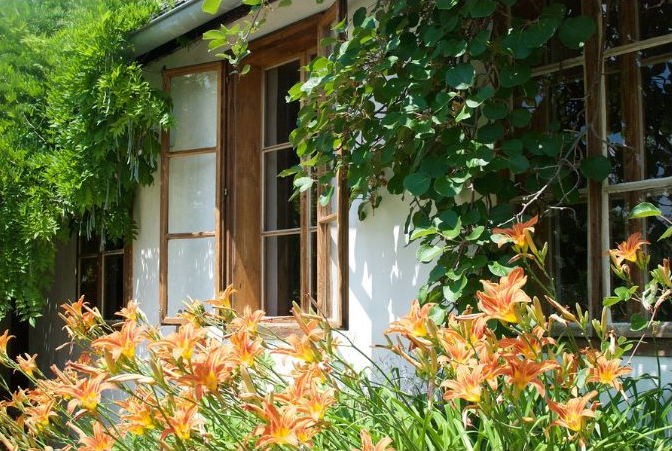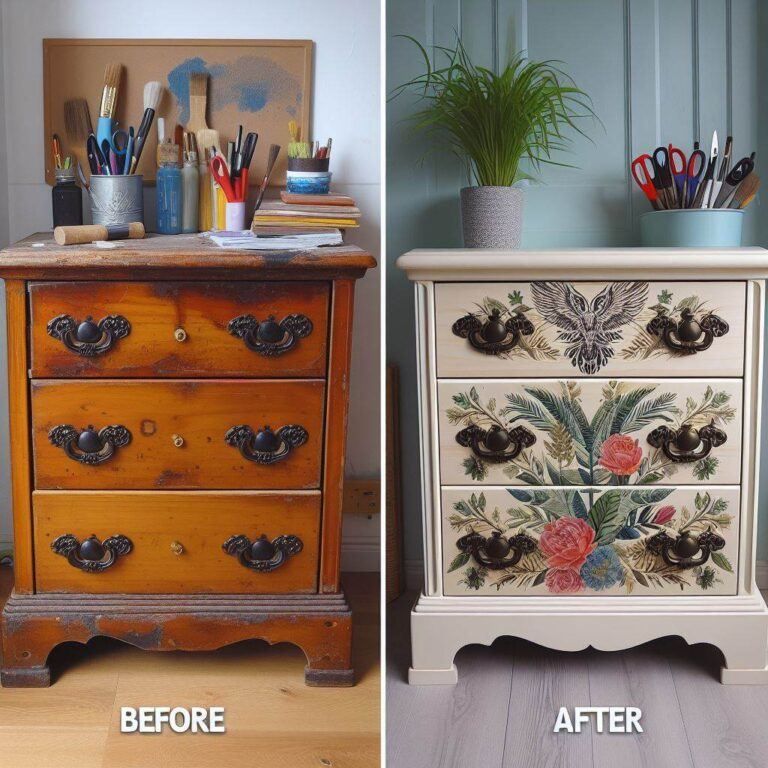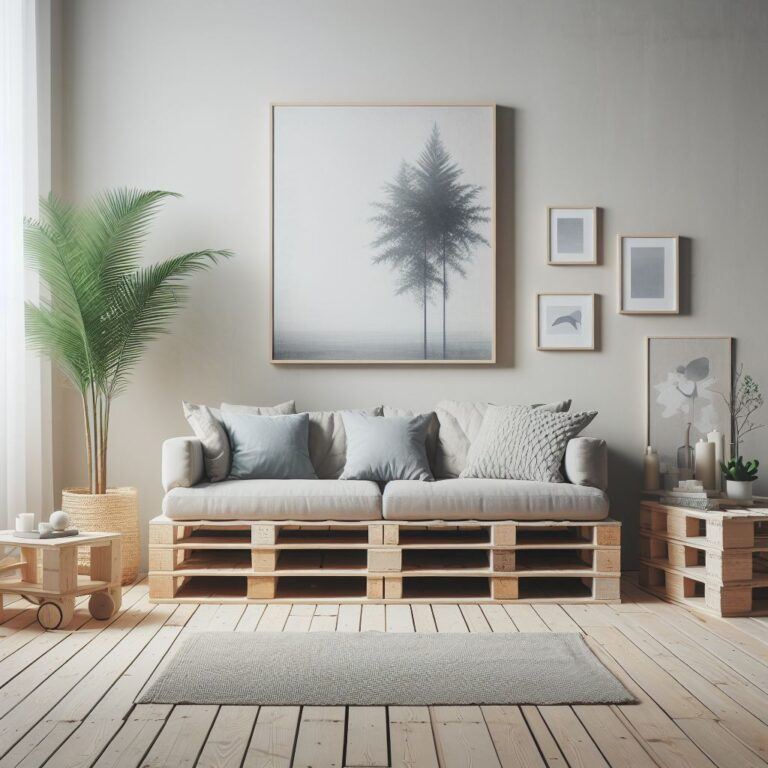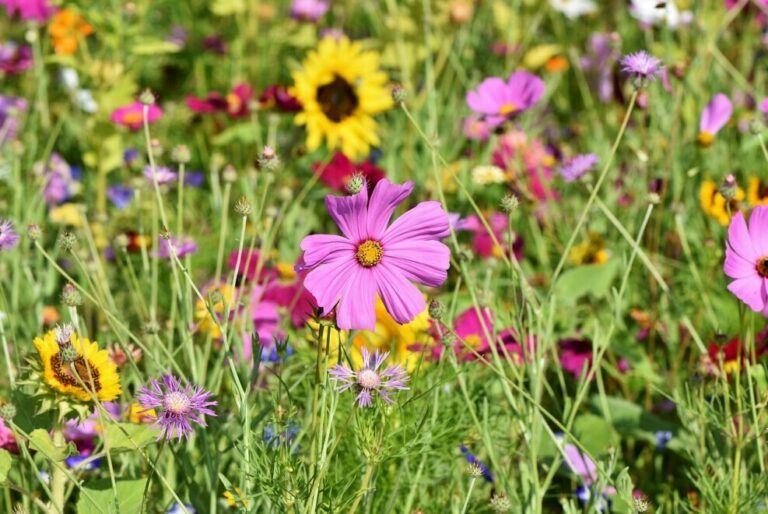How To Keep Your Home Cool In Summer
We’ve finally had some lovely, long-awaited, sunny days in the north of England and it has been great to get outside and enjoy the sunshine! However, although it is lovely to see the sunshine, it can pose some problems in the height of summer – namely the increased heat inside your home. I have this problem myself. It gets particularly hot in my house because I have a south facing garden and large glass patio doors along the back of my house, the heat can get intense – to say the least! I am currently working on sustainable ways to reduce the heat in my home and I thought I’d share some of these ideas with you. So if your home has a tendency to turn into an oven during the summer months and you’d like to find out how to keep your home sustainably cool in summer, then you’ve come to the right place. We will look at six simple strategies that help maintain a comfortable indoor environment throughout the summer months.
1. Close Curtains and Blinds

This is a simple yet effective way to help keep your home cool during the summer months. Closing blinds or curtains during the hottest part of the day can block out sunlight and prevent additional heat from entering your home, helping you maintain a comfortable indoor temperature without relying heavily on energy-consuming air conditioning or electric fans. Lighter colored curtains and blinds made of heavier fabrics will provide the best heat shield.
2. Windows and Doors

Closing windows and exterior doors during the day (if it is hotter outside) will prevent the cooler air escaping from your home. As the heat of the day begins to subside, this is the time to open your windows and doors to allow the cooler air to flow through your home.
3. Create Natural Shading

Adding natural shading to the exterior of your home can significantly reduce heat gain and keep your indoor spaces cooler. Planting deciduous trees strategically so that they create shade during the summer months but allow the winter sun into your home when they lose their leaves is a natural shading solution. Additionally, planting climbing ivy or vines along the exterior of your home can act as a natural shield against heat rays. Alternatively, adding pergolas to your outdoor spaces can provide shade and reduce the amount of sunlight that enters your home, helping you stay comfortable even on the hottest days.
4. Sail Shades & Brise Soleil


These methods of shading involve adding structures to or near your windows and doors to prevent the sun entering your home. Sail shades are versatile as they can be moved easily. Alternatively brise soleil are fixed onto your house so cannot be moved. Both are a great solution for reducing heat gain through large glass windows and doors whilst still allowing you to enjoy your outside views. Although they are a more costly solution than planting for natural shading, you do get instant results as opposed to waiting for your trees or plants to grow sufficiently to provide shade.
5. Fit Reflective Window Film

Although the film itself may not be considered eco-friendly, the results gained by using Low-E window film is definitely environmentally friendly. This window film reduces heat build up in your home, thus reducing the need to use air conditioning and reducing your carbon footprint as a result. During cooler seasons, this window film helps retain the heat in your home by bouncing the heat back into a room. For more information on window film and its benefits click here.
6. Effective Use of Fans

Fans are a simple, cost effective way to do more than just blow air around the room. When placed strategically, they help maintain a comfortable temperature in your home. For example, position a fan near a window facing outwards to expel hot air, while another fan on the opposite side of the room is positioned to draw fresh, cool air in. If the outside temperature is too high to open the windows, you could try setting a bowl of ice in front of a fan. As the ice melts, the fan whisks the cold moisture through the air giving you an improvised AC effect.
Opting for energy efficient fans will lead to significant savings in terms of energy and budget over time, so ensure you check the energy rating of any purchases you make. You can also reduce energy consumption by turning off the fan when you leave a room.
Conclusion
By implementing these sustainable and practical strategies, you can effectively manage the heat in your home during the summer months without heavily relying on air conditioning. Closing curtains and blinds during peak sunlight hours, strategically using fans, and enhancing natural shading are all simple yet impactful methods to keep your home cool.
Additionally, closing windows and doors during the hottest parts of the day, while opening them in the cooler evenings, helps to maintain a comfortable indoor environment. Installing reflective window film can significantly reduce heat buildup and is a cost-effective, eco-friendly solution. For those willing to invest a bit more, sail shades and brise soleil offer immediate and effective shading for large glass areas, enhancing both comfort and aesthetic appeal.
Creating natural shading by planting deciduous trees and climbing vines offers a long-term solution that is both sustainable and beneficial for the environment. These natural additions not only provide shade in the summer but also allow sunlight to warm your home in the winter, demonstrating the dual benefits of thoughtful landscaping.
With these tips, you can transform your home into a cool and inviting space, even during the peak of summer. Embracing these eco-friendly practices not only helps to reduce your energy consumption and carbon footprint but also contributes to a more sustainable and enjoyable home environment. So, whether you’re battling the heat in your south-facing garden or just looking for ways to keep your home comfortably cool, these strategies are sure to provide relief and enhance your summer experience.
I hope you found some of these suggestions useful and actionable. Let me know which ones you are going to try or maybe you have already put some into action. If you’d like to share your thoughts or experiences, please leave a comment below.








I don’t live in a traditional sticks and bricks. I was a full-time RVer for 6 years and traveled all over the United States. I am now stationary in my RV at a nice RV park in Florida. The A/C units in an RV are far from being powerful and efficient. I found your article interesting because many of the tips you give I implement in my RV. The one I have found to be most effective is closing the curtains and blinds. I use “black-out” curtains which are extremely effective keeping out the sun and heat especially on my large living room window. Using window tint also prevents heat (and keeps in cool) further. Although being in an RV park we are not allowed to plant or put up permanent structures, I use a sunshade that attaches to my awning to further block the sun. It’s very similar to the “sail shade” idea you explained. Lastly I use fans strategically placed in the RV to circulate the cool air from the centrally located RV throughout the unit. The combination of all these things make living in an RV bearable even in the hot Florida summers. All in all your tips were spot on. Thank you for helping keep our homes (and RV’s!!!) cool… Dennis
Thanks for your comments Dennis. You’ve certainly nailed it in terms of keeping cool in your RV. I’ve been to Florida a few times during the summer months and it is HOT!
Your approach seems to be the perfect solution – combining a few cooling methods for a comfortable, ambient temperature. So, well done to you in managing to keep the temperatures manageable inside your RV.
Elaine
I think your point about using lighter colored blinds and curtains made of heavier fabrics is a really good and easy-to-implement way of managing heat in the home in summer. I similarly like the idea of planting trees to create some shade. It may take a while for the trees to mature, but the additional benefits to the environment make me feel that it is well worth it.
A family friend recently installed reflective film sheets on windows in his home and I had wondered about it but kept omitting to ask him each time we met. This post just told me why it was a sensible decision. I really enjoyed reading this post. I also think your web page design is really nice.
Thank you so much for your comments Oluseyi. I agree that planting trees and shrubs to create shade would be great for the environment and this is something I plan to do at my home. I currently use blinds and although they cut our the sun’s glare, the sun’s heat still enters my home. The trees and shrubs will definitely be worth the wait!